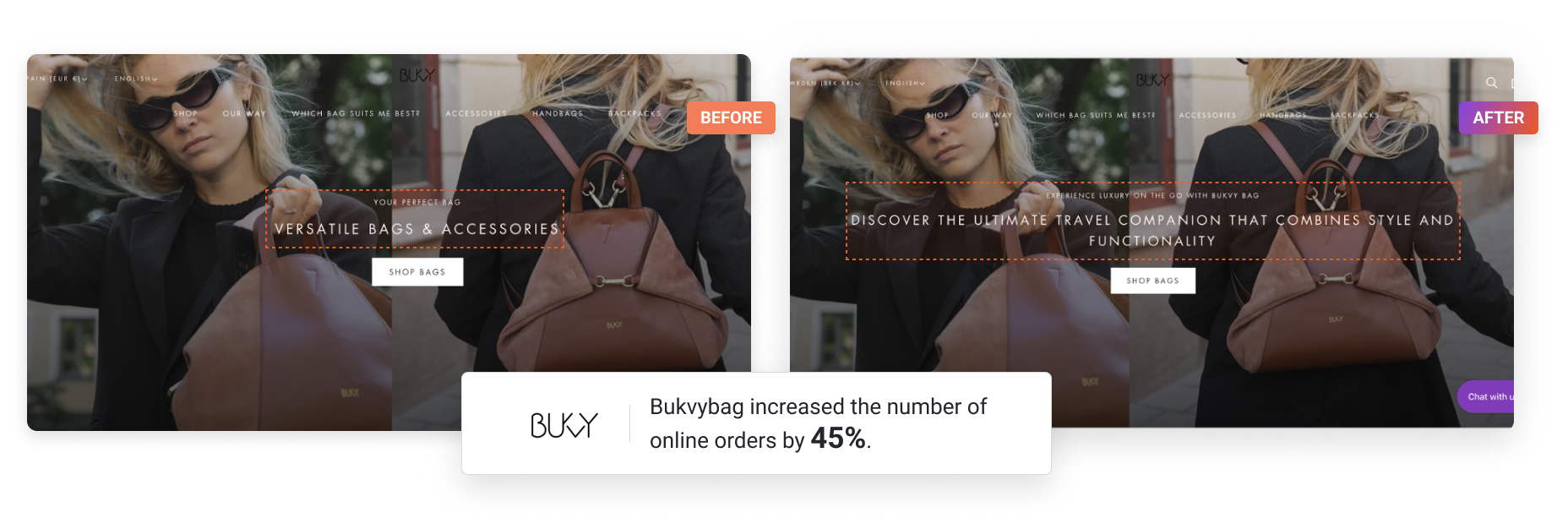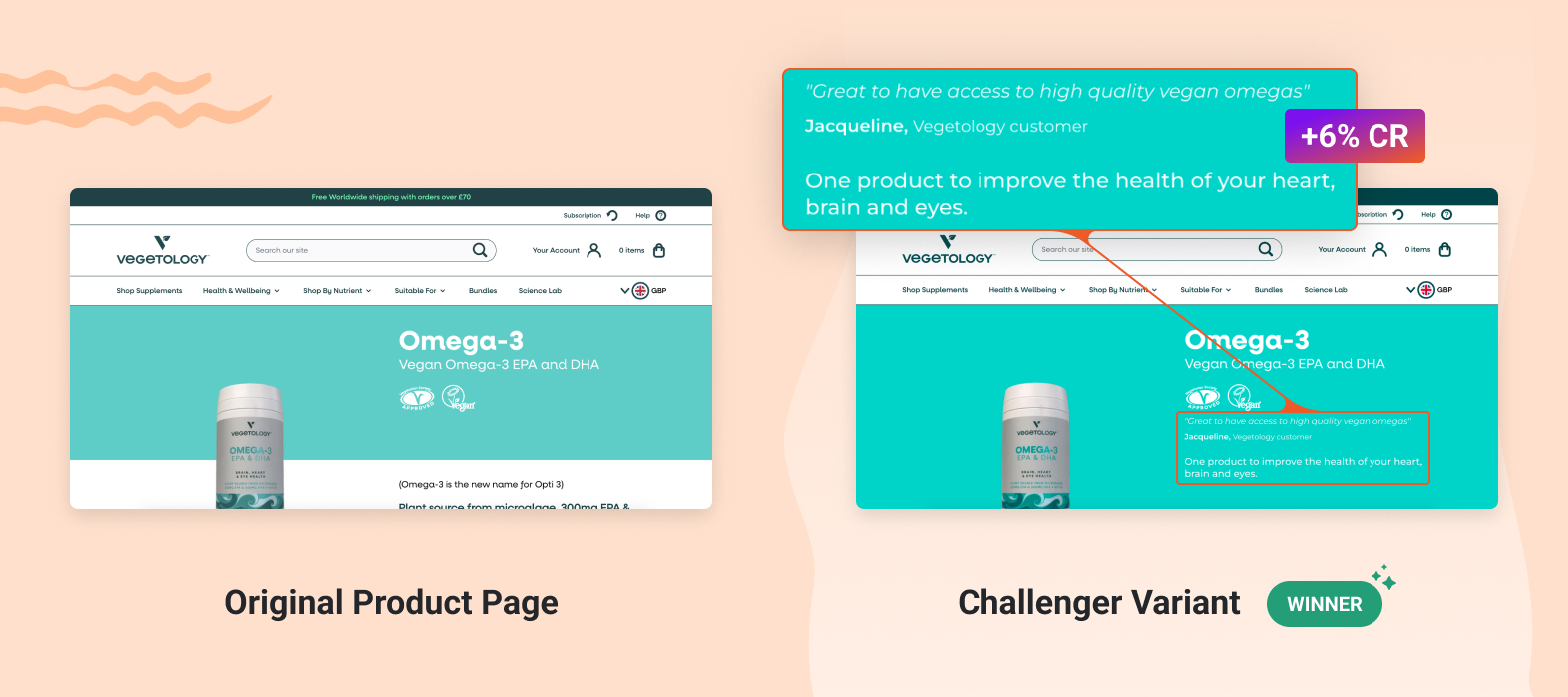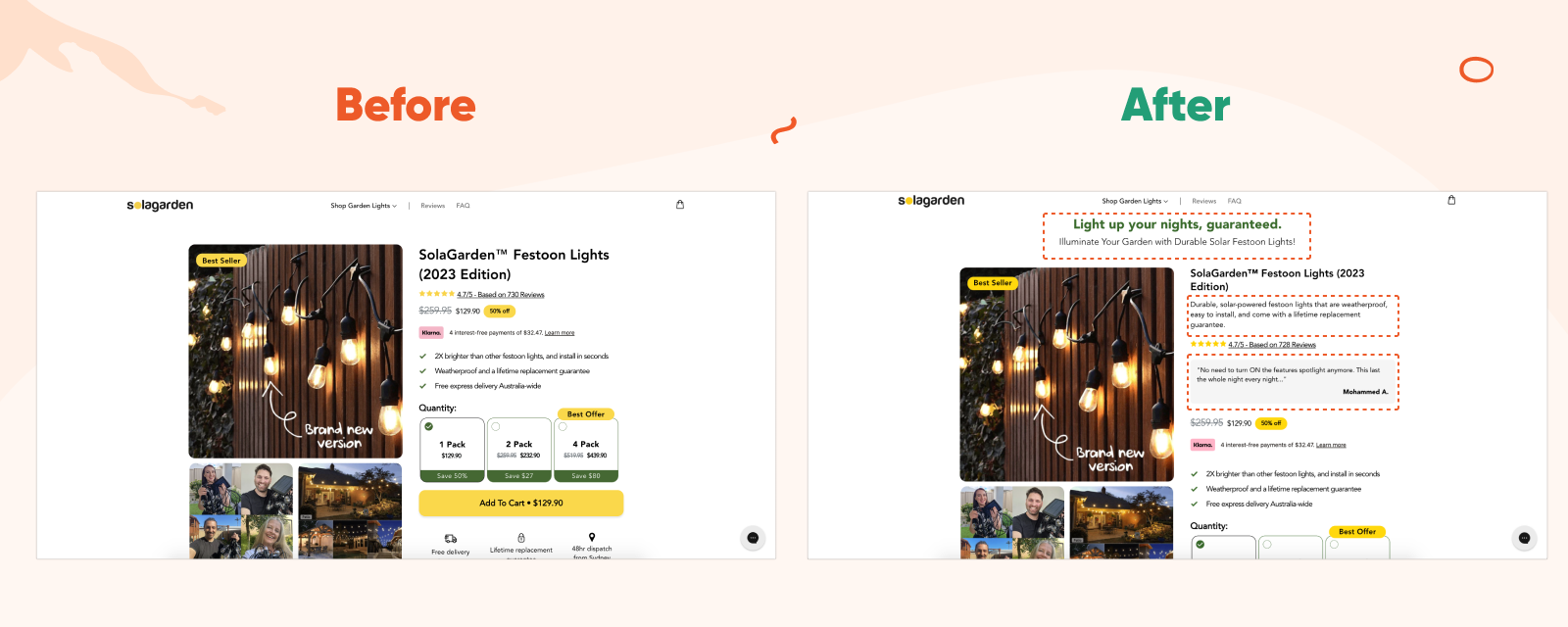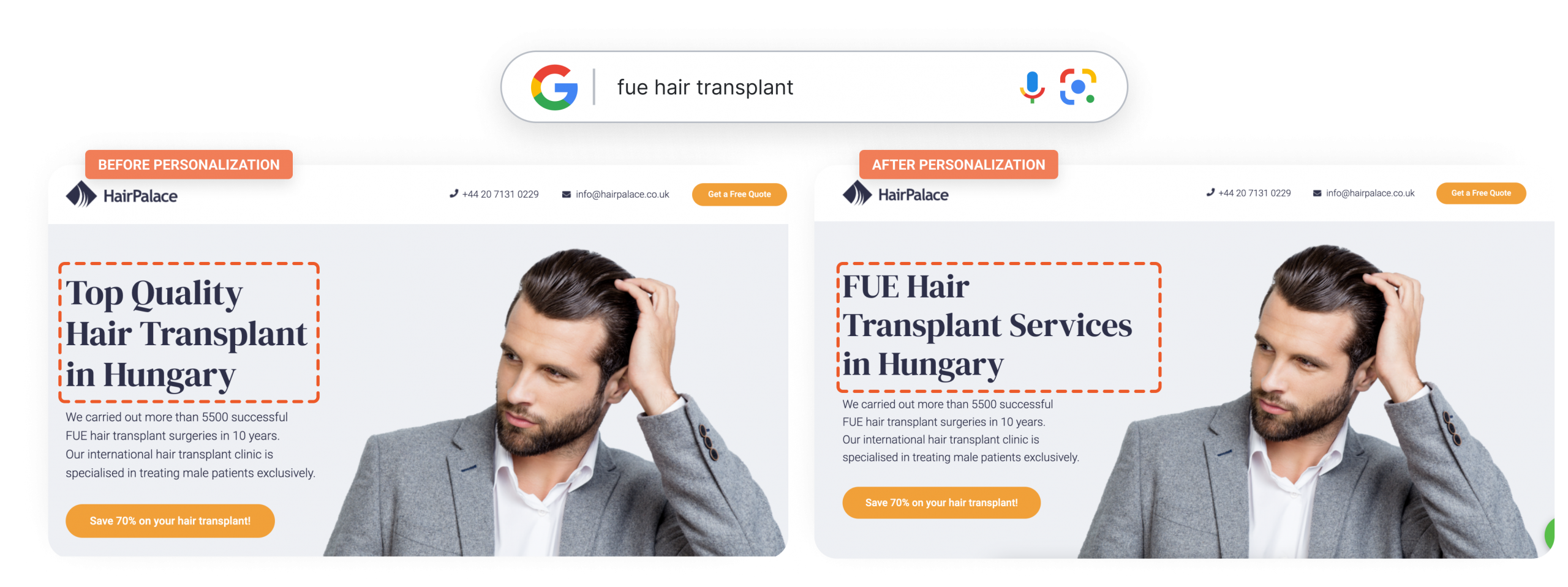In today’s competitive digital landscape, small businesses must find innovative ways to stand out and drive growth. Conversion rate optimization is a powerful strategy that can help you do just that.
By improving your website’s performance and user experience, you can turn more visitors into customers and boost your bottom line.
This article will walk you through the ins and outs of conversion rate optimization for small business websites, highlighting essential conversion rate optimization strategies you can use to fuel your growth.
Let’s get started!
What is conversion rate optimization (CRO)?
Conversion rate optimization (CRO) is the process of increasing the proportion of website visitors who complete a desired action, such as making a purchase or signing up for a newsletter.
The core intent of setting a conversion goal is to maximize the value of your existing website traffic while ensuring you’re focusing on qualified leads.
Small business owners can enjoy several benefits when they implement effective CRO strategies and use conversion rate optimization tools, such as:
- highly qualified leads,
- increased revenue, and
- reduced acquisition costs.
So, how do you calculate your website’s conversion rate?
It’s simple: divide the number of conversions (such as completed sales or sign-ups) by the total number of website visitors, and then multiply by 100. This gives you the percentage of visitors who take the desired action on your website.

Focusing on CRO can enhance your average conversion rate and optimize the potential of your current website traffic.
The role of CRO in small business growth
One of the most compelling reasons to invest in CRO is the potential to double leads and customers.
For instance, raising the conversion rate from 1% to 2% can result in a 100% increase in leads and customers, which can have a transformative impact on your business.
Optimizing the conversion rate can increase lead and customer generation for a small business website by gaining additional leads from existing traffic. This means that you’re not only driving more conversions, but also ensuring that you’re maximizing the value of every visitor who lands on your website.
To achieve this, you must continually monitor your website’s performance using tools like Google Analytics, and make data-driven decisions to refine your CRO strategies and tactics.
Challenges faced by small businesses in CRO
Small businesses often face unique challenges when it comes to implementing effective CRO strategies.
One such challenge is limited resources, including budget, time, and personnel. These constraints can make it difficult for small businesses to execute successful CRO strategies and achieve the results they want. That’s why you need to use free tools like free procreate brushes to create your visuals and other CRO elements.
Another common challenge for small businesses is the lack of expertise in CRO tactics such as website design, A/B testing, and analytics. Without the necessary know-how, small businesses may struggle to identify and implement the most effective CRO strategies for their website.
Despite these hurdles, it’s vital that small businesses dedicate time and effort to mastering CRO. By addressing these challenges and leveraging the right tools and strategies, small businesses can transform their websites into conversion powerhouses and drive sustainable growth in today’s competitive digital landscape.
8 essential CRO strategies for small business websites
Let’s explore eight essential CRO strategies that small business websites can employ to enhance conversions and stimulate growth. Each of these strategies focuses on a specific aspect of your website, from design and performance to content and personalization.
By implementing these strategies, you can create a high-converting website that attracts, engages, and ultimately converts your website visitors into paying customers.
1. Optimize website design and layout
A user-friendly website design is paramount for CRO success.
According to eConsultancy, search users are two to three times more likely to convert if they have a seamless user experience. Strategic optimization of your website design and layout can mitigate user friction and heighten the likelihood of conversions.
One effective strategy for simplifying the user experience is to reduce visual noise on your website. Visual noise includes:
- unnecessary graphic design elements,
- verbose copy, and
- other distractions that make it difficult for visitors to focus on your primary conversion element: the call-to-action.
Incorporating negative space, also known as white space, in your website design can help direct attention to your call-to-action, reducing visual clutter and improving the user experience.
You also want to make the onsite customer journey clear and straightforward. This facilitates an effortless experience for a prospective lead, boosting the chances they’ll complete the call-to-action, thus enhancing the probability of conversion.
For example, Slack’s website provides an excellent example of a website with a clear onsite journey.
Another crucial aspect of website optimization is creating the right balance in your forms. The ‘Goldilocks’ method for website forms involves crafting forms that are neither too short nor too long, ensuring that you collect meaningful data without overwhelming your users.
Optimizing your website’s design and layout creates a seamless user experience that promotes conversions and fuels growth.
2. Improve website speed and performance
Website speed and performance play a significant role in CRO, as faster websites offer a better user experience and can improve your search engine rankings.
Longer website visits and lower bounce rates indicate to search engines that your website is reliable and deserving of more traffic. To assess and improve your website’s speed, you can use tools like PageSpeed Insights and Pingdom.
For Shopify store owners, it’s essential to optimize your website for speed and performance by uninstalling any apps that you’re no longer using. These unused apps can create additional load (even when disabled) potentially slowing down your site.
Maintaining a bug-free website is also vital for maximizing conversion rates and preventing potential clients or customers from getting discouraged. Regular website audits can help identify and fix any issues, ensuring that your website runs smoothly and efficiently at all times.
An emphasis on enhancing your website’s speed and performance can lower bounce rates, improve the user experience, and consequently increase conversions.
3. Enhance mobile responsiveness
With over 59% of web traffic originating from smartphones and tablets, mobile responsiveness is a key consideration for small businesses. Given the increasing number of mobile users, it’s vital to adapt your website’s design and content to suit mobile devices.
When creating web pages for mobile devices, keep your copy concise and consider how content is displayed differently on smaller screens. You can also use Google’s mobile-friendly test tool to determine if your website is optimized for mobile by simply inputting your URL.
Enhancing mobile responsiveness not only improves the overall performance of your website, but also allows you to meet the needs of a diverse user base. Optimizing your website for mobile devices ensures a smooth user experience for all visitors, improving the mobile conversion rate.
4. Run A/B tests
A/B testing is a critical component of CRO, as it allows you to compare two or more versions of a web page or app to discover which performs best.
By conducting A/B tests, you can pinpoint the most effective design elements, calls-to-action, and content for improving conversions. You’ll also gain insights into user behavior.
But let’s be real: A/B testing is a complex, resource-intensive process that requires not just time and money but also a high degree of specialized expertise, and small business owners usually can’t afford to focus on it.
Luckily, there’s a better solution that you can use: it’s called Smart A/B testing.
This tool makes A/B testing easy with fully automated, AI-assisted A/B testing. You can run multiple A/B tests at the same time on any part of your webpage. You decide on the tests, and our AI executes them automatically.

Success in A/B testing hinges on constant optimization. By testing various website elements regularly and making decisions based on data, you can refine your CRO strategies and tactics, ultimately leading to more conversions and business growth.
5. Leverage social proof
Social proof is a powerful tool for building trust and credibility with potential customers. This includes various different types of user-generated content, such as:
- positive reviews,
- ratings,
- testimonials,
- case studies, and
- social media mentions.
Using this UCG, you can demonstrate to other users that your brand is reliable and trustworthy, leading to increased conversions.
Incorporating customer reviews and testimonials and social proof on your website is an effective way to maximize the impact of social proof.
Optimizing product pages with social proof can also help shape purchasing decisions and drive conversions. By showcasing the experiences and opinions of satisfied customers, you can persuade potential customers to choose your products or services over those of your competitors.
The Vegetology team tried this strategy and they were able to increase website conversions by 6%.

In conclusion, social proof like customer reviews and testimonials is a powerful way to establish trust and credibility with potential customers, which will improve your conversion rate.
6. Optimize product pages
Low conversion rates can often be traced back to ineffective product pages. But optimizing product pages—providing precise, compelling descriptions, transparent pricing information, and effectively highlighting the benefits of your products—is a bit of a hassle… especially if you have thousands of products.
That’s where Smart Product Page Optimizer can help you. Smart Product Page Optimizer, powered by AI, transforms ordinary product pages into highly effective sales pages. This tool can create captivating headlines, product descriptions, and benefit lists that resonate with your audience.
But that’s not all: it enables you to conduct A/B tests on multiple product pages simultaneously, even if you have thousands of products.
Let’s see two examples of successful product page optimization:
1. Varnish & Vine
Varnish & Vine is a US-based ecommerce store specializing in tropical plants and cactuses. They increased their conversion rate by 28% and their online revenue by 44% on average using Smart Product Page Optimizer.

Read more about Varnish and Vine’s success.
2. SolaGarden
SolaGarden, an Australian ecommerce store that sells outdoor lighting, increased their revenue by 10.9% by optimizing their product pages with Smart Product Page Optimizer.

Learn more about SolaGarden’s optimization journey.
7. Personalize your landing pages
Personalizing landing pages is an effective approach to increasing conversions, as it allows you to deliver tailored content and offers to customers based on their preferences and needs. But continuously optimizing your landing pages and tailoring them to echo your ads is usually a difficult system to maintain.
With Smart Personalizer, you can leverage the power of real time personalization and significantly boost the conversion rate of your PPC campaigns.
With this AI-powered tool, you can enhance your landing page for each visitor, automatically adjusting headlines, descriptions, and text to match each visitor’s specific interests.
From now on you can effortlessly synchronize your Google and Facebook ads to align with your landing pages.

8. Use personalized popups
Personalized popups are overlays that appear on a website to engage visitors, offer incentives, and collect user data for future marketing efforts.
By providing tailored content and offers, personalized popups can help increase conversions, build relationships with customers, and collect valuable user data, offering numerous benefits to small business websites.
Sounds great, right? Well, if you do it manually, it’s quite a bit of work. That’s where Smart Popups can help you—with today’s AI technology, you can personalize your popups for each visitor and create a unique customer journey that’s relevant and meaningful.

Our AI understands your visitors’ interests by analyzing the ads they clicked on or the landing pages they visited. Then, you simply insert the elements you want to personalize on your popup, target it, and let AI do the rest!
FAQ
How do I optimize my website conversion rate?
To optimize your website conversion rate, use a strong color for all call-to-action (CTA) buttons, place primary CTAs above the fold, create urgency with time-limited offers, always display testimonials, and use fewer fields on forms.
What is a good conversion rate for a small business?
For small businesses, a good conversion rate is above 10%. The top 25% of companies achieve a rate of 5.31% or higher, and the top 10% have conversion rates of 11.45% or higher. Taking steps to optimize your conversion rate can be key to gaining a competitive edge in the market.
Wrapping up
Throughout this comprehensive guide, we’ve explored the essential CRO strategies for small business websites, from optimizing website design and layout to leveraging social proof and personalizing landing pages.
By implementing these strategies, you can create a high-converting website that attracts, engages, and ultimately converts your website visitors into paying customers.
Start optimizing your small business website with the power of AI today!












